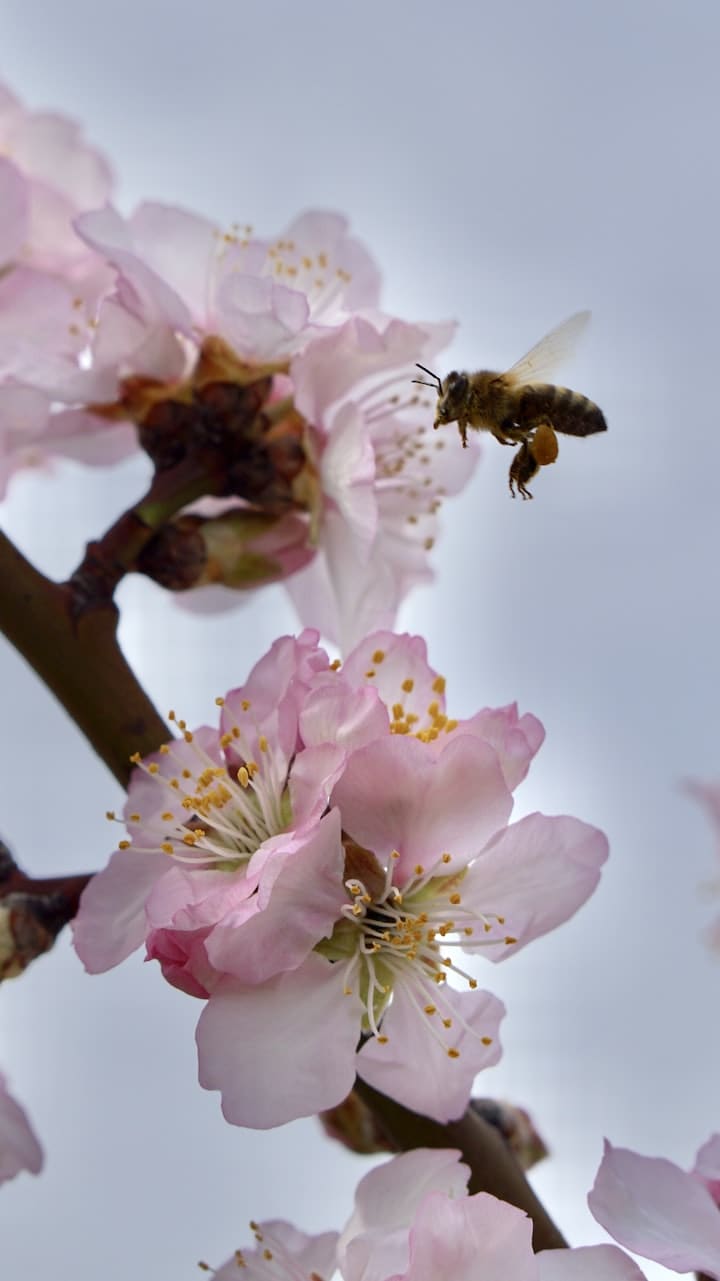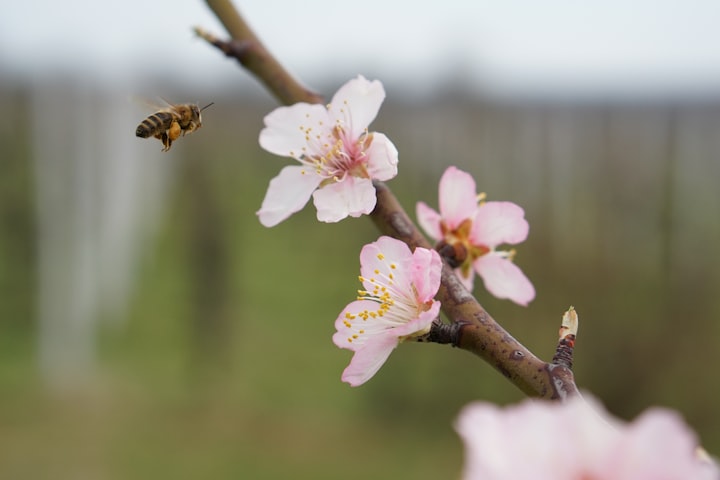FACTS ABOUT BEES
INFORMATION ABOUT BEES
FACTS ABOUT BEES

They are little, they are fuzzy, and they are buzzy. Bees! Bees are some of the most important creatures on our planet. Although they may not be big, they are hard at work collecting nectar from flowers and helping to pollinate crops.But did you know that there is much more to these tiny insects than meets the eye?
Let us dive into the fascinating world of bees, exploring everything from their anatomy and behavior to the important role they play in our ecosystem. Get ready to BUZZ with excitement as we learn all about these amazing creatures!
There are more than 20,000 different species of bees in the world, with over 3,500 species native to North America alone, but the bee that is familiar to most people is the western honeybee. Although bees of different species will vary in appearance, they tend to have a fuzzy body and black and yellow stripes.
Over 90% of bee species do not make honey or live in large colonies, the way honeybees do. These types of bees are known as solitary bees, and they play a crucial role in pollinating our plants and flowers. Some examples of solitary bees include: mason bees, leafcutter bees, and bumblebees.
Let us take a look at the anatomy of a bee. As an insect, its body is divided into three parts: the head, the thorax, and the abdomen. On the bee's head, you will find two large compound eyes that help the bee see and navigate, as well as three smaller simple eyes. That's right - bees actually have five eyes.
The bee's antennae are also located on the head and are used for detecting smells, communicating with other bees, and sensing vibrations. The bee's head is also equipped with a proboscis, which is used for sucking nectar from flowers. The thorax is the middle part, where the bee's wings and legs are attached.
Bees have two pairs of wings, which they use to fly. They have six legs in total, with each leg ending in a small claw that helps it grip onto surfaces. Finally, the bee's abdomen contains its digestive system, reproductive system, and other important
organs. It is also where the bee keeps its stinger. Bee stingers are a small but important part of a bee's anatomy. When a bee feels threatened, it may sting in defense. The stinger is a sharp, pointed organ located near the bee's tail end.
When a bee stings, it releases venom, which can cause its attacker pain. Some bee species are more likely to sting, while others, like the bumblebee, only sting rarely.
This bumblebee needs something to eat, and it's found the perfect place to look: a flower in full bloom. It is searching for nectar, a sweet liquid that provides the energy and nutrients needed for the bee to survive. After landing on a suitable flower, it uses its proboscis, a long, straw-like tongue, to reach deep inside and extract the sweet nectar.
This nectar is stored in the bee's honey stomach, a specialized part of its digestive system that is used to carry and process the nectar. The bee's proboscis is perfectly designed for this task. It is long and highly flexible, allowing the bee to reach into deep, narrow flowers, and it is lined with tiny, bristly hairs that help to collect the nectar as the bee drinks. The bee can control the flow of nectar by squeezing and releasing its honey stomach, which creates a vacuum that draws the nectar into its mouth.
As the bee moves from flower to flower, collecting nectar, it also collects pollen on its furry body. This pollen gets transferred to other flowers, which helps the plants reproduce. This process of collecting nectar and pollen is called pollination, and is vital to the survival of many plants and flowers.
But now that we have mentioned the wider bee family, let's turn our attention to honeybees. Less than 5 percent of bee species make honey in large enough quantities that it is useful to humans. Honeybees are special!
The relationship between honeybees and humans goes back thousands of years.
Ancient civilizations, such as the Egyptians, Greeks, and Romans, all recognized the importance of honeybees, and used their honey and wax for both practical and ceremonial purposes. The ancient Greeks even considered the bee to be a symbol of the soul. As human civilizations expanded and grew, so too did their knowledge and appreciation of honeybees. The domestication of honeybees became widespread in Europe during the Middle Ages, and by the time of American colonization, honeybees were a common sight there, and were instrumental in the growth of agriculture and commerce.
The value of honeybees as pollinators and honey producers has been recognized by humans for centuries, and today, honeybees are considered a vital part of the global ecosystem. Honeybees are social insects, and live in large colonies, called hives. These hives are made up of thousands of bees, each with a specific role in maintaining the health and survival of the colony. Hives are constructed from wax inside a larger structure, and are designed to protect the colony from predators and the elements.
The interior of the hive is made up of a series of hexagonal cells that are used to store
honey and to raise the young. The hives have a queen bee, which is responsible for laying eggs, and worker bees, which carry out various tasks such as foraging for food and caring for the young.
Like the queen, all the worker bees are female. The male bees are called drones, with no other function but to mate with the queen. In a healthy hive, cooperation and division of labor among the bees helps to ensure the survival and success of the colony.
A community of bees this large needs a great deal of food. That's why one of the most important jobs of the worker bees is collecting nectar from flowers. Once they return to the beehive, they regurgitate the nectar into the honeycomb, where other worker bees will fan their wings to evaporate the excess water and create honey, stored carefully in wax-covered cells.
Honey is an important food source for the adult bees, but it's also used to feed the
developing larvae. The worker bees take care of the eggs and later, young bees, feeding them and keeping them warm, until they are old enough to emerge as adults and take on their own responsibilities within the colony.
Another vital task within the beehive is ventilation. Worker bees are constantly flapping their wings to circulate air and maintain a comfortable temperature within the hive.
When things get too hot, fanning can help cool them down.
And then there are the guards, a small number of bees who stand guard at the entrance of the beehive. They are responsible for protecting the colony from intruders, such as predators or rival bees. By working together, bees are able to ensure the survival and prosperity of their colony.
Bees play a crucial role in the ecosystem by pollinating plants, which helps to produce food for animals and humans. However, these hardworking insects face a variety of threats that put their survival in danger. One of the biggest threats is the use of pesticides, which can harm or kill bees. Climate change, loss of habitats, and diseases also pose a risk their populations.
To help protect these important insects, conservation efforts have been established around the world. Beekeepers work to maintain healthy hives, and farmers are encouraged to create habitats that are friendly to bees, such as planting flowers and shrubs that provide food and shelter. It is important that we all do our part to protect honeybees and their habitats. By taking steps to conserve these insects, we can help ensure that they will be around for future generations to benefit from and enjoy. And doesn't that sound sweet?






Comments
odirile toby sekotswe is not accepting comments at the moment
Want to show your support? Send them a one-off tip.